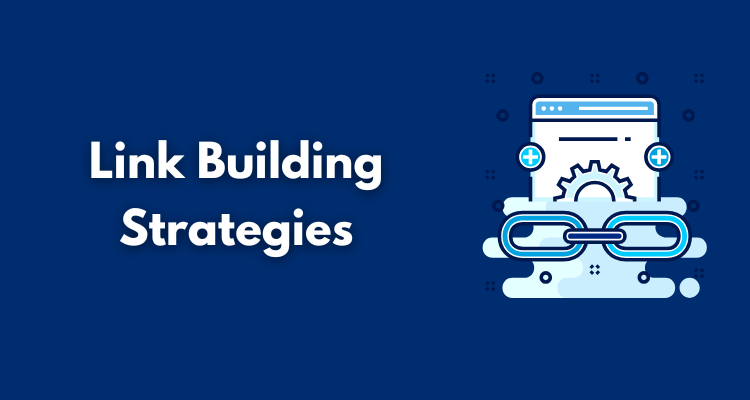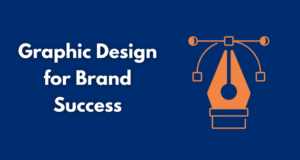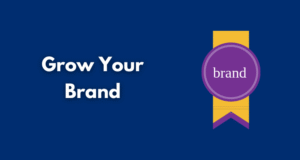White hat SEO link building refers to earning backlinks through ethical, search engine-approved methods. These techniques align with Google’s Webmaster Guidelines and focus on long-term growth, rather than quick hacks. The practical implication of this approach is sustainability.
Unlike manipulative tactics that may lead to penalties or short-lived gains, white hat strategies foster steady improvements in authority and rankings that compound over time.
For example, a small business that consistently earns links through helpful blog content, guest posts, or industry partnerships may not see overnight results. Still, over several months, it can begin outranking competitors in search, all while building a stronger brand and customer trust.
White hat link building also makes it easier to qualify for inclusion in Google’s AI Overviews, where structured, trustworthy content is favored. This alignment with algorithmic expectations and user needs ensures that white hat strategies remain relevant and impactful even as search evolves.
Unlike black hat tactics that try to manipulate rankings, white hat link building is about creating value-driven content, building real relationships, and earning authority through trust and relevance. It’s an organic process where quality naturally attracts attention and links over time a key factor in sustainable search visibility.
However, in some cases, buying links strategically from vetted, high-authority sources can complement these efforts without compromising SEO integrity. When these purchased links come from platforms known for transparency and content alignment, such as the best place to buy backlinks, they support white hat strategies by accelerating visibility and reinforcing trust signals in a way that still appears natural and earned.
Table of Contents
ToggleWhy White Hat Link Building Still Matters in 2025

In the age of AI-powered search and enhanced ranking algorithms, link building remains one of Google’s algorithm’s strongest signals of authority.
Google rewards links that are:
- Contextual and relevant
- Editorially earned or placed
- From trustworthy, authoritative sources
These links act as third-party validation. The more high-quality, relevant endorsements your site earns, the more search engines perceive you as credible, leading to better rankings and visibility.
Core Principles of White Hat Link Building
1. Create Link-Worthy Content
Great content is the foundation of any ethical link-building strategy not just in terms of quality but also in its practical usefulness and shareability. Link-worthy content naturally attracts backlinks because it solves real problems, provides unique insights, or adds tangible value to its audience.
This includes, for example:
- In-depth blog posts that answer specific industry questions
- Original research or statistics that journalists and bloggers can cite
- Visual assets like infographics or data visualizations that can be embedded and shared
- Interactive tools, templates, or calculators that help users accomplish a task
Practical implication: A well-crafted downloadable template for content calendars can earn backlinks from marketing blogs, agency directories, and social media. Likewise, original research on your industry (even a simple survey) can lead to news coverage, amplifying authority and traffic. Creating content that’s not only readable but usable is key to sustainable white hat link building.
- In-depth blog posts or guides
- Original research or statistics
- Visual content like infographics
- Tools, templates, or calculators
Example: A small tax firm publishes a detailed guide on “2025 Tax Deductions for Freelancers.” It can attract backlinks from accounting blogs and business media if it’s well-optimized and shared with industry groups.
2. Conduct Manual Outreach
Reaching out to bloggers, journalists, and web admins with personalized pitches is a classic white hat tactic. The goal is to:
- Offer value (e.g., guest posts, expert commentary)
- Fix broken links with updated content
- Suggest resources for “best of” lists or guides
This process takes time but yields links that are earned, not bought.
3. Leverage Digital PR and Thought Leadership
Digital PR combines storytelling and outreach to earn coverage and links. Try:
- Issuing press releases about company news
- Participating in expert roundups or interviews
- Creating content that taps into current trends
This not only earns backlinks but also builds brand visibility.
Where Does Buying Links Fit into White Hat SEO?

There’s a common misconception that buying any link is black hat. In truth, it’s all about how you do it.
Google discourages manipulative link schemes, but purchasing placements on real, editorial sites with transparent partnerships can align with white hat principles, mainly when those links are acquired in broader brand-building campaigns.
For instance, sponsoring a niche podcast or submitting a guest article to a reputable industry blog may involve payment. Still, it also results in authentic exposure, readership value, and a naturally integrated backlink.
In practical terms, small businesses that lack PR teams or influencer connections can use this strategy to compete on equal footing. Buying placements on vetted, authoritative sites can help them accelerate trust signals, support inclusion in AI summaries, and even lead to secondary benefits like referral traffic or business partnerships all while remaining within ethical SEO boundaries.
- Are disclosed as sponsored or guest contributions
- Provide real value to readers
- Appear naturally within relevant, original content
For example, using the best place to buy backlinks a vetted marketplace with strict quality controls — allows small business owners to gain traction faster without compromising SEO integrity.
Like paying for a PR feature or influencer campaign, buying links from the right place is simply a digital visibility investment.
Complementary Strategies That Amplify Link Value
Pairing white hat link building with other ethical strategies makes your SEO more resilient:
- Technical SEO: Ensure fast loading speeds, mobile responsiveness, and a crawlable site structure
- Content Strategy: Develop topic clusters and internal linking to build topical authority
- Brand Building: Participate in community forums, podcasts, or niche directories
- AI Optimization: Format content for Google’s AI Overviews by answering common questions concisely
Best Practices for Sustainable Results
To maximize impact:
- Start with low-hanging fruit: Use tools like Ahrefs or Semrush to find unlinked mentions
- Set link-building KPIs: Monitor Domain Rating (DR), referring domains, and SERP positions
- Document outreach: Track who you contact, what you offer, and what responses you get
- Don’t over-optimize anchor text: Mix in branded and generic anchors
Pitfalls to Avoid (Even with White Hat Intentions)
- Overusing exact-match keywords in anchor text
- Trading links or using link farms
- Ignoring user intent or content quality to build links
- Relying on AI-generated content without editing or fact-checking
White hat doesn’t mean “slow.” It means “smart and scalable.”
Opinion: Is Buying Links or Driving Paid Traffic Wrong?
Not necessarily.
Let’s face it: Google Ads cost money, too, often $10–$50 per click in competitive niches. And once your ad spend stops, so does the traffic.
By contrast, backlinks are assets that continue to generate value over time. They improve rankings, increase referral traffic, and even support inclusion in AI-driven features like Google’s Search Generative Experience (SGE).
When done with transparency and strategic placement, buying links is no different from paying for exposure on other platforms, such as media sponsorships, display ads, or paid PR. It may offer better long-term returns by building link equity, improving search visibility, and increasing brand trust.
For small business owners, combining white hat techniques with smart investments provides both scalability and efficiency. For example, while creating blog content and pitching for guest posts is effective, securing a few quality links can take weeks or months. Meanwhile, buying editorial links on niche blogs or digital publications can accelerate early-stage visibility, helping your content gain traction faster and making it easier to earn organic links naturally. This hybrid model of ethical outreach and paid placements is often the most practical and sustainable path to SEO growth, especially in competitive markets.
Summary: White Hat Link Building Is About Trust and Strategy
White hat SEO link building isn’t just about ethics — it’s about building long-term authority, trust, and performance in Google.
Whether you’re writing link-worthy content, pitching editors, or selecting the best place to buy backlinks, the goal is to earn and amplify trust signals that help Google rank your site higher. In practical terms, this means investing in strategies that not only build backlinks but also improve the quality and authority of the content in those links. For example, earning a link to a detailed product guide can increase its search visibility and boost conversions. At the same time, backlinks to educational blog posts can lead to greater brand awareness and audience engagement. Trust signals also contribute to inclusion in Google’s AI-generated summaries, featured snippets, and knowledge panels, extending your reach beyond traditional blue links. Ultimately, every ethical link you build helps compound your site’s credibility, making future SEO efforts more efficient and effective.
When done right, white hat link building is scalable, safe, and foundational to every smart SEO strategy in 2025 and beyond.
FAQ
1. What is white hat link building?
It’s earning backlinks through ethical, Google-compliant methods like guest posting, content marketing, and digital PR.
2. Can I buy backlinks and still stay white hat?
Yes, if you’re buying from real, high-quality websites that provide editorial value, not link farms or spam networks.
3. What’s the best place to buy backlinks safely?
Look for platforms that vet publishers, disclose metrics, and ensure contextual, relevant placements in real content.
4. How long does white hat link building take to show results?
It usually takes 2–6 months, depending on competition and site authority, but results are more sustainable and stable over time.









